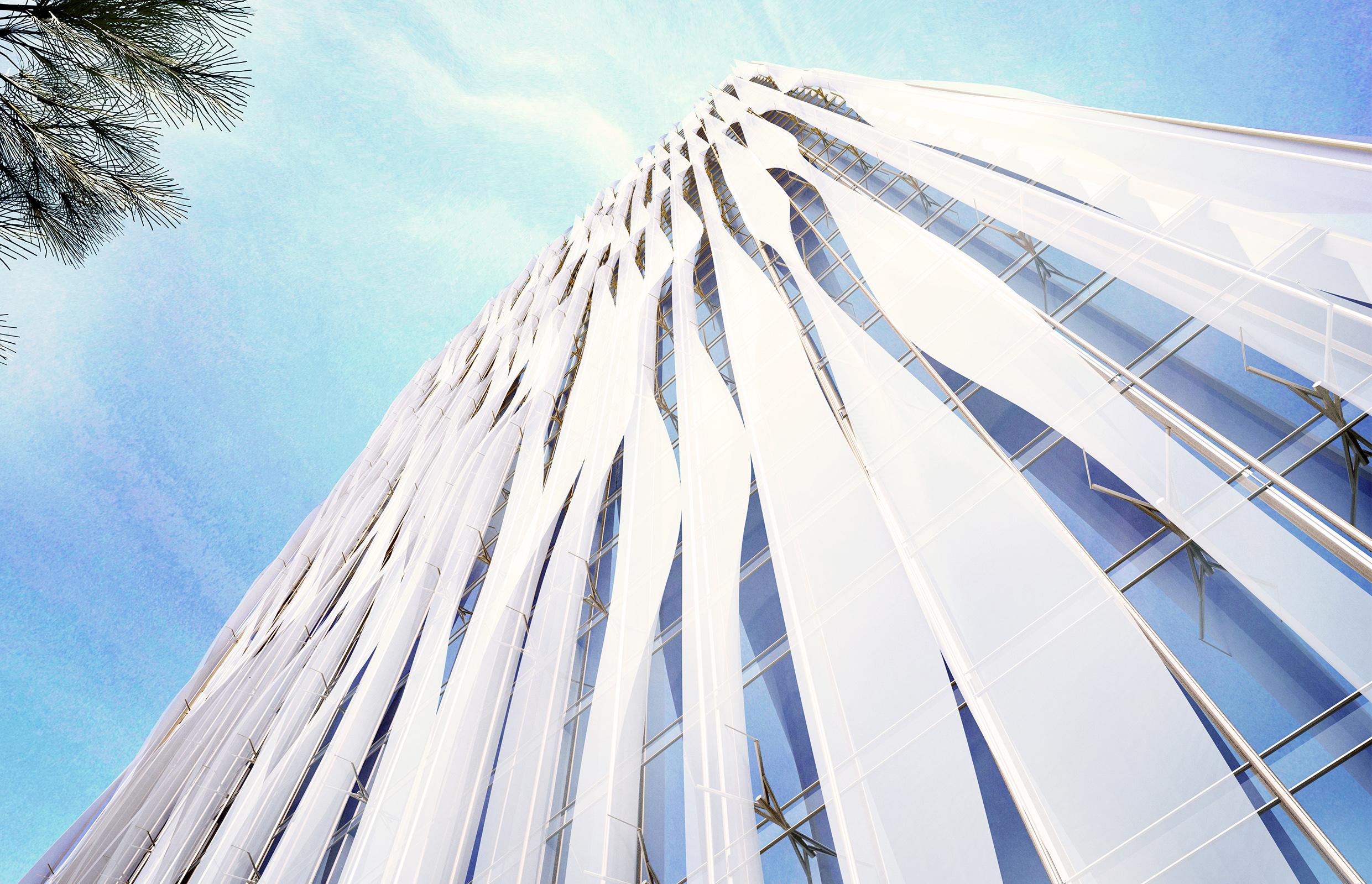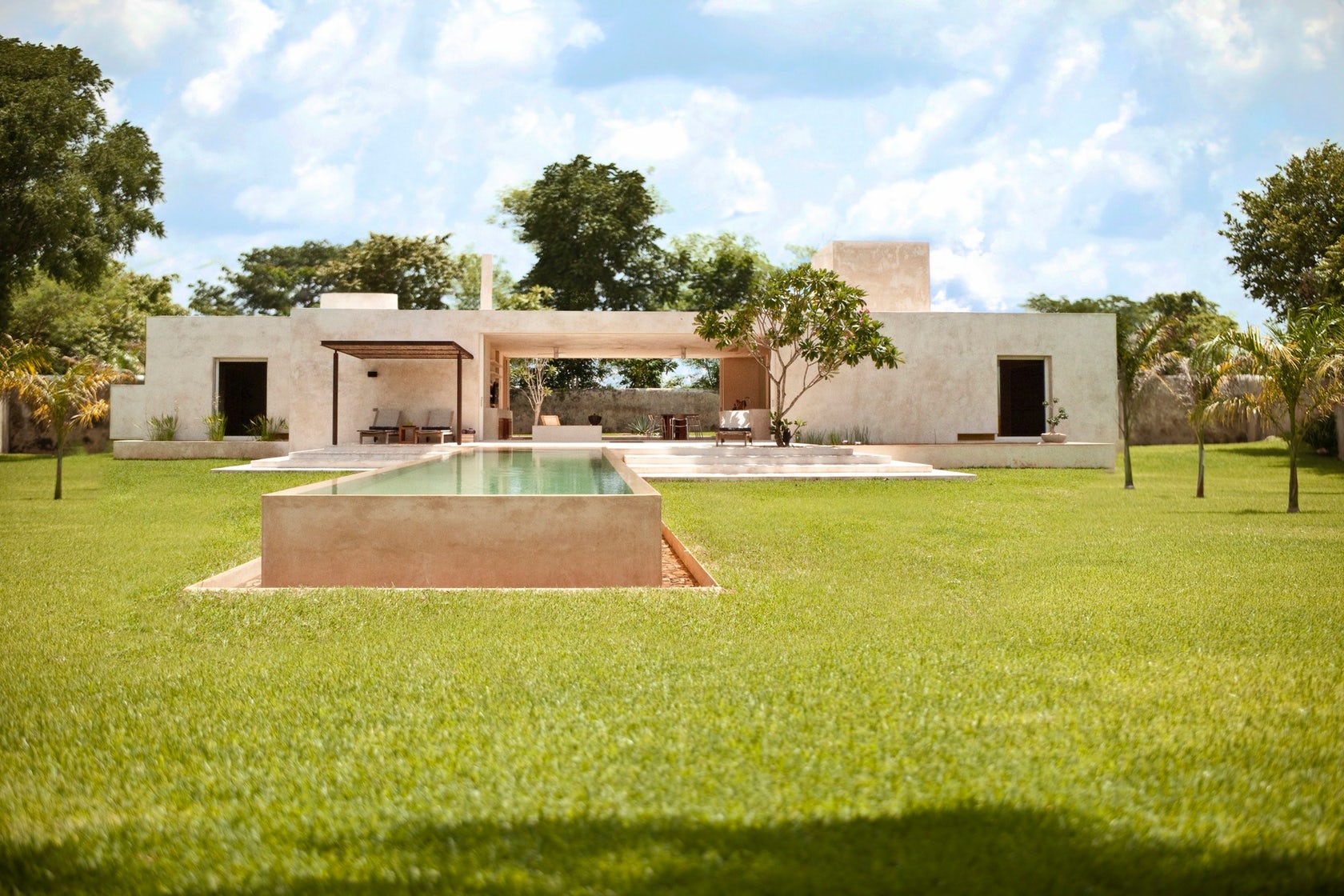One of the most heavily underestimated materials in construction is fabric. Usually considered a loose, non-structural, decorative building-product, it’s not often the first choice of architects specifying building shading systems or sun screens. In contemporary design, however, flexible yet durable fabric can move beyond the realm of interior curtains and become an integral part of the building envelope. It can transform a structure aesthetically and also enhance its overall performance, taking a formerly boring façade and enlivening it from the outside in.
Now in its fifth year, the 2017 Future of Shade Competition attracted 348 submissions from 30 countries around the world. Created to challenge the conventional notions of how fabric can be used to make exciting, emotive and functional spaces, architects and designers were invited to use Sunbrella® fabrics as part of their conceptual designs. Each submission was crafted in response to the competition’s three categories: Humanitarian, Well-being and Building Shade.
{% blog_media_item 2265508 %}
Responsive Shading System, Grand Prize winner in the Building Shade category
San Francisco-based architect Arman Hadilou’s innovative Responsive Shading System, grand prize winner in the Building Shade category, features fabric ribbons that act as a dynamic second skin for a high-rise tower in downtown Austin, Texas. The design helps both shade inhabitants and regulate temperatures within the building.
The strips of fabric are controlled by kinetic, adjustable arms within the curtain wall system that move in response to changes in the outdoor environment. The specific shape of the shades control solar heat gain, daylight, heat loss and ventilation. Jury member Sean Anderson, associate curator of architecture design at the Museum of Modern Art, believes that Hadilou’s design both enhances the energy efficiency of the building and elevates its overall appeal.
“This project suggests now that with fabrics and textiles, we can create shade, create spaces of interest and create new views from both the inside and from the outside,” said Anderson. “It also enlivens a façade that would also be otherwise ignored.”
{% blog_media_item 2265510 %}
Responsive Shading System, Grand Prize winner in the Building Shade category
Beyond providing innovative forms of shade, architectural fabric can be given a secondary function, as seen in Cotton Hill, which received an honorable mention in the Building Shade category. The project updates the traditional use of Sunbrella fabrics by integrating them into a modular system that includes natural vegetation. The steel canopy loosely employs the fabric within each module, filling the space with soil and allowing shrubs to grow.
{% blog_media_item 2265511 %}
FRAMES TO SHAMS-OL-EMAREH, Juror Choice in the Building Shade category
Fabric can also be manipulated to frame views in a public space. Juror Choice winner in the Building Shade category, FRAMES TO SHAMS-OL-EMAREH, features a suspended structure between two buildings in the historical district of Pamenar, Tehran. The hanging Sunbrella fabric, which thermally controls the surrounding environment, provides unique perspectives of the adjacent Golestan palace.
{% blog_media_item 2265512 %}
Invertible Shade, also Juror Choice winner in the Building Shade category
Invertible Shade, another juror choice winner, utilizes fabric as a dynamic shading device. The project consists of changeable parts and tensile elements that provide various levels of sunlight emission and shade configuration. The flexible Sunbrella fabrics can alter in shape to change the angle of shade coming into a facility.
{% blog_media_item 2265513 %}
Reuse | Revive | Repopulate, Grand Prize winner in the Well-being category
Rafael Duailibe dos Santos, grand prize winner of the Well-being category, reimagined a deteriorating building in the historic city center of Sãn Luis, Brazil as a new gathering space shaded by Sunbrella fabrics. Reuse | Revive | Repopulate employs a light shading system across the open-air ceiling that gives users a place to relax and unwind within an unexpected and inviting interior greenscape.
Dos Santos sought to physically revive the building with a simple shading design in hopes of attracting city-dwellers back to the old structure. “What if I could keep the façades, maintaining some of the building’s history yet transform its interior,” he said, “creating an area that would be of interest to local people and bring people back to the area?” The design also uses Sunbrella fabrics to create hanging chairs that suspend from the steel and fabric roof. According to Anderson, the project urges architects to think about their individual city’s forgotten spaces as the basis for integrating transformative design.
“We don’t need to demolish or abandon buildings,” argues Dos Santos. “We could potentially use fabric systems that begin to fill in the gaps of spaces in our cities and in our built environment that exist because we stopped looking at them.”
{% blog_media_item 2265514 %}
Cooling Tower, Honorable Mention in the Well-being category
As a shading material, fabric can help actively cool an area plagued by too much heat. This is seen in Cooling Tower, honorable mention winner in the Well-being category. Cooling Tower was designed as a canopy tent that provides shaded public space with natural ventilation on hot days. Sunbrella fabric covers the metallic structure and creates an updraft of air inside the canopy when heated by solar energy. At its core, the communal design physically functions to create a more habitable climate.
{% blog_media_item 2265515 %}
DISCOVER, Juror Choice in the Well-being category
DISCOVER, juror choice winner in the Well-being category, takes shade to an even larger scale by creating an ambiguous and adaptable space centered around large light orifices. Perforated Sunbrella fabric on the ceiling and on the moveable walls allow users to explore the interplay of light between the shade and sun as the day passes. DISCOVER provides collective mental health benefits as an exhibition, cultural or concert space. It can also be used as a place of meditation and silence.
{% blog_media_item 2265516 %}
Resilient Communities, Grand Prize Winner of the Humanitarian category
While using fabric to design a strong shading system within a stationary structure is a challenge in itself, utilizing fabric for temporary constructions — especially ones that respond to crisis situations — requires a different kind of design thinking. Felipe Guerrero, an architect in Bogotá, Columbia, was inspired by a volunteer trip he took earlier this year in the design of Resilient Communities, for which he won the grand prize in the Humanitarian category.
After volunteering in the devastated town of Mocoa, which experienced horrific flooding this spring, Guerrero devised a series of modules designed with Sunbrella fabrics that could be set up in situations where recent natural disasters or social crises have occurred. Each module is designed to supply displaced people with three fundamental needs: community integration, shelter and basic hygiene access.
The proposal even includes a rainwater harvesting system — named “Flip” — that uses fabric as an inverted umbrella to filter water into the internal pipeline. The habitable module, named “Extrude”, can house four to eight people and utilizes elastic Sunbrella fabrics as a wrapping over the makeshift metal and recycled plastic home. “As architects we face a major challenge,” said Guerrero, “and that’s designing for climate change and global warming. It’s important to consider shade in our design not as a decorative element, but as an element that provides shelter.”




